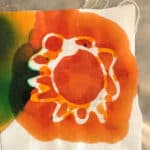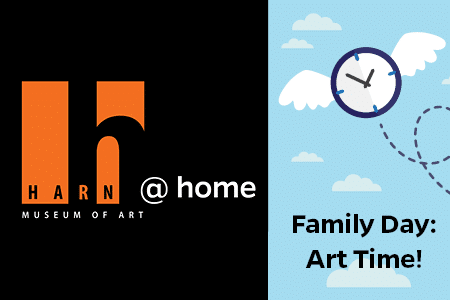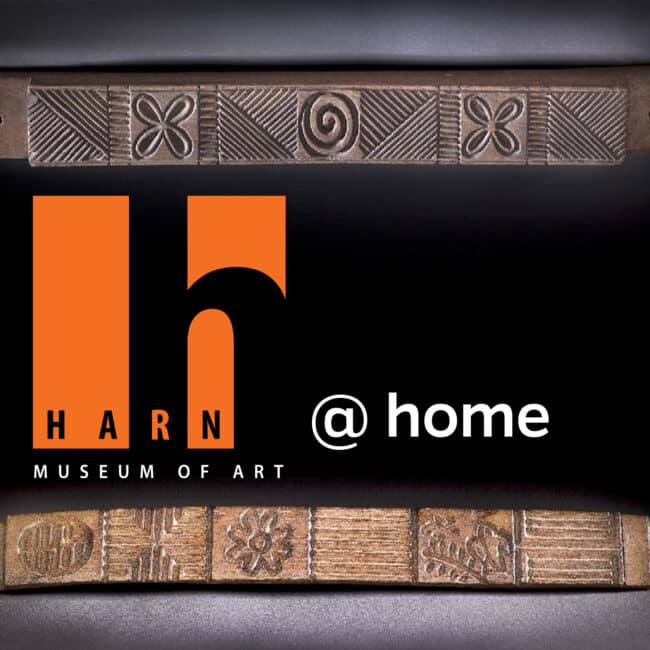Watch the video to learn about Adire Eleko, then make your own inspired resist-dyed fabric.
What You’ll Need
- Protective cover for your art-making surface
- White glue
- Piece of fabric
- Cardboard
- Liquid food coloring
- Paintbrush
- Salt + water solution
- Bowl or bucket
What You’ll Do
1. Watch the Adire Eleko video to learn about Cloth with Olokun, Goddess of the Sea Motif and the art of resist dyeing.
2. Spread out a protective sheet over your art-making surface. This will help with clean-up since this activity can get messy!
- Tip: Old newspapers and paper bags work well as protective covers.
3. Place a piece of cardboard underneath your fabric.
• Tip: Old t-shirts, pillowcases or pieces of scrap fabric work well with this project.
• If you are dyeing a shirt or pillowcase, then place a piece of cardboard in-between the layers of fabric. This will block the glue and dye from bleeding into the back layer of fabric.
4. Use white glue to draw a design onto the fabric. Play with patterns and symbols to create a unique design!
- Does your fabric have a repeating pattern on it like the Harn’s Adire Eleko? Or does your composition continuously change?
5. Set the fabric aside to let the glue dry completely. This may take several hours to a day depending on the thickness of your glue.
6. Once the glue is dry, dye your fabric by squeezing or painting the liquid food coloring onto your design. Watch as the glue resists the dye to create an eye-catching design!
- Will you dye your fabric one color or multiple colors?
7. Set the fabric aside overnight to dry completely.
8. Set the dye with a salt + water solution.
- Fill a bowl or bucket with cold water and 1 – 2 tablespoons of salt. Submerge the dyed fabric completely and let soak for 5 minutes.
- The glue will wash out in the solution, leaving lines of undyed fabric in the design.
9. Rinse your dyed creation in cold water until the water runs clear.
10. Let dry, then enjoy your Adire Eleko inspired resist-dyed fabric!
Lesson plan by Courtney Toelle, Family Programs Intern and Art History and Museum Studies Master of Arts Student and Keithley Fellow in Case Western Reserve University’s Department of Art History and Art.
Animoto and activity inspired by Cloth with Olokun, Goddess of the Sea Motif (Adire Eleko) by a Yoruba artist, c. 1973, imported cotton cloth, indigo dye with starch resist, Gift of Dr. Robin Poynor





